
 Copyright 2021 by Patti Johnson-Long Photography 2021 by Patti Johnson-Long unless otherwise stated All rights reserved. No part of this book may be reproduced in any manner without the express written consent of the publisher, except in the case of brief excerpts in critical reviews or articles. All inquiries should be addressed to Skyhorse Publishing, 307 West 36th Street, 11th Floor, New York, NY 10018. Skyhorse Publishing books may be purchased in bulk at special discounts for sales promotion, corporate gifts, fund-raising, or educational purposes. Special editions can also be created to specifications. For details, contact the Special Sales Department, Skyhorse Publishing, 307 West 36th Street, 11th Floor, New York, NY 10018 or .
Copyright 2021 by Patti Johnson-Long Photography 2021 by Patti Johnson-Long unless otherwise stated All rights reserved. No part of this book may be reproduced in any manner without the express written consent of the publisher, except in the case of brief excerpts in critical reviews or articles. All inquiries should be addressed to Skyhorse Publishing, 307 West 36th Street, 11th Floor, New York, NY 10018. Skyhorse Publishing books may be purchased in bulk at special discounts for sales promotion, corporate gifts, fund-raising, or educational purposes. Special editions can also be created to specifications. For details, contact the Special Sales Department, Skyhorse Publishing, 307 West 36th Street, 11th Floor, New York, NY 10018 or .
Skyhorse and Skyhorse Publishing are registered trademarks of Skyhorse Publishing, Inc., a Delaware corporation. Visit our website at www.skyhorsepublishing.com. 10 9 8 7 6 5 4 3 2 1 Library of Congress Cataloging-in-Publication Data is available on file. Cover design by Daniel Brount Cover photos by Shutterstock, Fawn Shear, Chris Johnson, and Tyler Bingham Print ISBN: 978-1-5107-6416-3 Ebook ISBN: 978-1-5107-6417-0 Printed in China To my German grandparents Eva and Jake Feist and their North Dakota farm families, who taught me rugged independence and inspired a farm dream. To my big brother John and sisters Debi, Laura, Jackie, and Connie, who nurtured my life past our parents death and made me feel forever loved. To my father- and mother-in-law Tom and Delores Long, who assisted in helping make my farm dream come true.
To my husband Rex and sweet children Salina and Robert, for believing in my farm dream with every farm chore and blessed farm dinner we share. I love you all dearly.  Contents Who Is FarmMade? Everyone is FarmMade! We all come from the farm; from the food that we eat, to the clothes that we wear, to the family traditions that we call our own. Each one of us is nourished by its bounty, and in many ways, live by its seasonal rhythms. Although the farm comes in all sorts of shapes and sizes these days, from sprawling cattle ranches in Montana, to urban rooftop farms in New York City, it evokes the same nostalgia that unites everyone to its plight. One that is essential to our human survival.
Contents Who Is FarmMade? Everyone is FarmMade! We all come from the farm; from the food that we eat, to the clothes that we wear, to the family traditions that we call our own. Each one of us is nourished by its bounty, and in many ways, live by its seasonal rhythms. Although the farm comes in all sorts of shapes and sizes these days, from sprawling cattle ranches in Montana, to urban rooftop farms in New York City, it evokes the same nostalgia that unites everyone to its plight. One that is essential to our human survival.
We are nostalgic for the farm like never before. Weve heard our parents and grandparents reminisce about growing up on a farm and wonder what it would be like to milk a cow, collect eggs from a hen house, or grow a beautiful garden for our families. Not too long ago, we were an agrarian society. We prided ourselves on turning milk into farm butter and cheese, farm-fresh eggs into baked custards, fresh picked cucumbers and cabbage into pickles and kraut, and sheared wool into cozy hats and throws for winter. Handwork skills, such as sewing a quilt, crocheting a washcloth, or embroidering a pillowcase were handed down from one generation to the next. Candle making, wine making, beer crafting, soap making, blacksmithing, basket weaving, and repurposing were all learned, time-honored traditional skills that contributed to a small farms micro-economy and long-term success.
These traditions are still alive and thriving, placing the farm as the beating heart of every culture around the world. Through their strong covenant with the land and each other, farmers are able to preserve strong family traditions that connect us to their ancient way of life. Their independent nature breeds care and pride. These principles are infused into everything a farmer does; in this vein, superior products are made. FarmMade aims to preserve and celebrate these skills and family farm traditions through sharing cultural recipes, farm stories, and handmade crafts that date back hundreds if not thousands of years. Everything we do at FarmMade is with deep reverence and love for farmers and all things farm.
We invite you to join us on our journey of purposeful living, by farm hopping from region to region, farmer to farmer, in search of a wholesomeness that can only be found on a farm. This book is about all farmers, all families, and the ever-important job of preserving our agrarian heritage and traditions, so let us collect eggs together, put up the harvest, and gather to celebrate all things farm. Northwest Region  No-Pectin Blueberry Lime Jam We, here at FarmMade, are continuously inspired by the seasonal rhythms and simple joys of farm life. Blueberry season in the Pacific Northwest is a blue-tiful time of year that always inspires us to scout out new varieties to grow ourselves or pick from local organic farms. This jam can be summer-in-a-jar if blueberries are joyfully picked and processed at the peak of freshness. We love pectin jams, but the absence of pectin in this recipe allows the jam to cook for a longer period of time and achieve a deeper flavor.
No-Pectin Blueberry Lime Jam We, here at FarmMade, are continuously inspired by the seasonal rhythms and simple joys of farm life. Blueberry season in the Pacific Northwest is a blue-tiful time of year that always inspires us to scout out new varieties to grow ourselves or pick from local organic farms. This jam can be summer-in-a-jar if blueberries are joyfully picked and processed at the peak of freshness. We love pectin jams, but the absence of pectin in this recipe allows the jam to cook for a longer period of time and achieve a deeper flavor.
This recipe also works well as a small-batch refrigerator or freezer jam and will complement any pantry or stand! Serves 6 half pints | Prep time: 10 minutes | Cook time: 20 minutes | Processing time: 15 minutes Ingredients 4 cups blueberries 5 cups sugar 1 tablespoon lime juice,
plus zest to taste 1 teaspoon butter Instructions  Chris Johnson Wash the blueberries well. Place them in a large saucepan with sugar and lime juice and zest. Gently bring to a simmer while stirring occasionally. When the sugar has dissolved, mash the blueberries with a spoon, or potato masher if desired. You may choose to leave a few blueberries whole if preferred.
Chris Johnson Wash the blueberries well. Place them in a large saucepan with sugar and lime juice and zest. Gently bring to a simmer while stirring occasionally. When the sugar has dissolved, mash the blueberries with a spoon, or potato masher if desired. You may choose to leave a few blueberries whole if preferred.  Chris Johnson Increase heat, bringing the blueberries to a rolling boil.
Chris Johnson Increase heat, bringing the blueberries to a rolling boil.
Turn heat to medium-low. The mixture should still be simmering, but slow. Set your timer for 20 minutes. Stir constantly to prevent caramelization.  Chris Johnson Toward the end of 20 minutes, lift the spoon up out of the mixture to see if its coated. If not, continue to boil for a few more minutes and check again.
Chris Johnson Toward the end of 20 minutes, lift the spoon up out of the mixture to see if its coated. If not, continue to boil for a few more minutes and check again.
Once the jam has thickened to the right consistency and right before you are ready to take the jam off the heat, add butter. The foam on top will dissolve and give you that glossy golden shine. Let the jam cool. Ladle into warm sterilized jars, leaving -inch space from the top. Use a clean sterilized knife or spatula to move the jam around a bit. This process will remove any air pockets.
Wipe the rim of the jar with a clean paper towel. Process for 15 minutes in a pot of boiling water or a water-bath canner.  Chris Johnson
Chris Johnson  Rachel Getsinger, a.k.a. Farmer Rachel
Rachel Getsinger, a.k.a. Farmer Rachel 
Next page
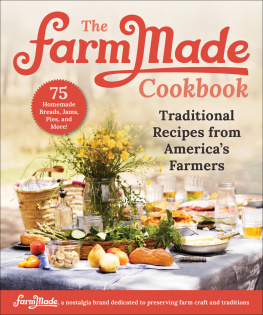
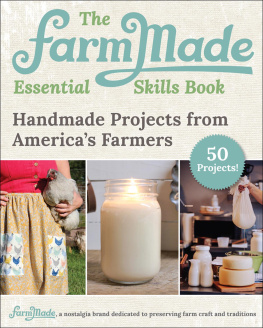

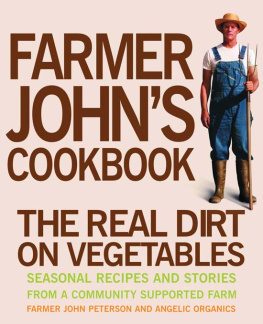
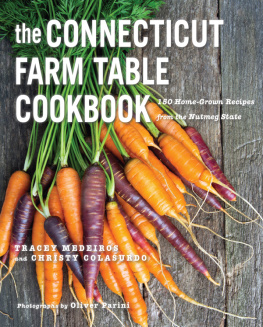
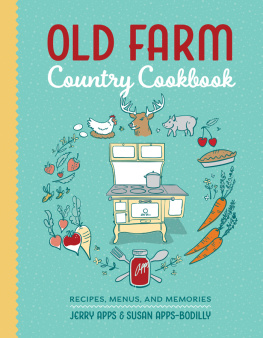


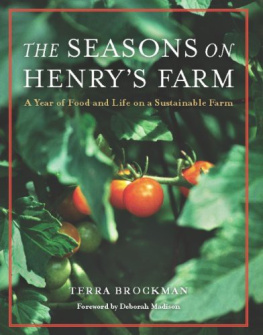
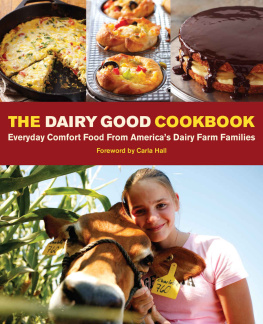
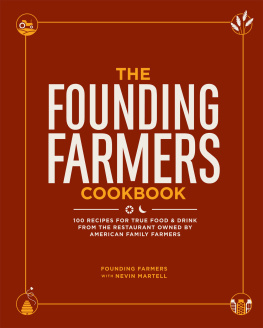

 Copyright 2021 by Patti Johnson-Long Photography 2021 by Patti Johnson-Long unless otherwise stated All rights reserved. No part of this book may be reproduced in any manner without the express written consent of the publisher, except in the case of brief excerpts in critical reviews or articles. All inquiries should be addressed to Skyhorse Publishing, 307 West 36th Street, 11th Floor, New York, NY 10018. Skyhorse Publishing books may be purchased in bulk at special discounts for sales promotion, corporate gifts, fund-raising, or educational purposes. Special editions can also be created to specifications. For details, contact the Special Sales Department, Skyhorse Publishing, 307 West 36th Street, 11th Floor, New York, NY 10018 or .
Copyright 2021 by Patti Johnson-Long Photography 2021 by Patti Johnson-Long unless otherwise stated All rights reserved. No part of this book may be reproduced in any manner without the express written consent of the publisher, except in the case of brief excerpts in critical reviews or articles. All inquiries should be addressed to Skyhorse Publishing, 307 West 36th Street, 11th Floor, New York, NY 10018. Skyhorse Publishing books may be purchased in bulk at special discounts for sales promotion, corporate gifts, fund-raising, or educational purposes. Special editions can also be created to specifications. For details, contact the Special Sales Department, Skyhorse Publishing, 307 West 36th Street, 11th Floor, New York, NY 10018 or . Contents Who Is FarmMade? Everyone is FarmMade! We all come from the farm; from the food that we eat, to the clothes that we wear, to the family traditions that we call our own. Each one of us is nourished by its bounty, and in many ways, live by its seasonal rhythms. Although the farm comes in all sorts of shapes and sizes these days, from sprawling cattle ranches in Montana, to urban rooftop farms in New York City, it evokes the same nostalgia that unites everyone to its plight. One that is essential to our human survival.
Contents Who Is FarmMade? Everyone is FarmMade! We all come from the farm; from the food that we eat, to the clothes that we wear, to the family traditions that we call our own. Each one of us is nourished by its bounty, and in many ways, live by its seasonal rhythms. Although the farm comes in all sorts of shapes and sizes these days, from sprawling cattle ranches in Montana, to urban rooftop farms in New York City, it evokes the same nostalgia that unites everyone to its plight. One that is essential to our human survival. No-Pectin Blueberry Lime Jam We, here at FarmMade, are continuously inspired by the seasonal rhythms and simple joys of farm life. Blueberry season in the Pacific Northwest is a blue-tiful time of year that always inspires us to scout out new varieties to grow ourselves or pick from local organic farms. This jam can be summer-in-a-jar if blueberries are joyfully picked and processed at the peak of freshness. We love pectin jams, but the absence of pectin in this recipe allows the jam to cook for a longer period of time and achieve a deeper flavor.
No-Pectin Blueberry Lime Jam We, here at FarmMade, are continuously inspired by the seasonal rhythms and simple joys of farm life. Blueberry season in the Pacific Northwest is a blue-tiful time of year that always inspires us to scout out new varieties to grow ourselves or pick from local organic farms. This jam can be summer-in-a-jar if blueberries are joyfully picked and processed at the peak of freshness. We love pectin jams, but the absence of pectin in this recipe allows the jam to cook for a longer period of time and achieve a deeper flavor. Chris Johnson Wash the blueberries well. Place them in a large saucepan with sugar and lime juice and zest. Gently bring to a simmer while stirring occasionally. When the sugar has dissolved, mash the blueberries with a spoon, or potato masher if desired. You may choose to leave a few blueberries whole if preferred.
Chris Johnson Wash the blueberries well. Place them in a large saucepan with sugar and lime juice and zest. Gently bring to a simmer while stirring occasionally. When the sugar has dissolved, mash the blueberries with a spoon, or potato masher if desired. You may choose to leave a few blueberries whole if preferred.  Chris Johnson Increase heat, bringing the blueberries to a rolling boil.
Chris Johnson Increase heat, bringing the blueberries to a rolling boil. Chris Johnson Toward the end of 20 minutes, lift the spoon up out of the mixture to see if its coated. If not, continue to boil for a few more minutes and check again.
Chris Johnson Toward the end of 20 minutes, lift the spoon up out of the mixture to see if its coated. If not, continue to boil for a few more minutes and check again. Chris Johnson
Chris Johnson  Rachel Getsinger, a.k.a. Farmer Rachel
Rachel Getsinger, a.k.a. Farmer Rachel